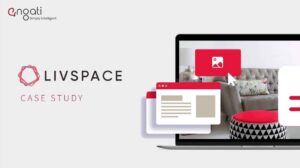So, you want to create a chatbot?
Well, you definitely should!
Because your customers want it and it is backed by data.
According to Salesforce’s “State of Service” report, 76% of service professionals said that customers have increased their use of self-service resources during the pandemic.
And, 83% of customers expect someone to interact with them immediately after they contact a company.
Then, What are you waiting for? Let’s get started!

But before moving ahead I highly suggest you to read this complete guide on What Exactly is a Chatbot? And Why is it Important?
To get a detailed understanding of the subject including, types of a chatbot, how does it work, its importance, use cases, and examples.
It is a prerequisite for this guide!
Ok, let’s start!
If you want to create anything from a tiny piece of art to a complex software product, there are 3 basic steps you need to follow that is,
- Plan
- Implement
- And, Optimize.
And, the same concept goes for creating a chatbot as well.
So, let’s look at the things you should consider and plan before creating a powerful chatbot, in the next section!
There are 4 most important things you need to plan before actually starting to create a chatbot.
Why do you want to create a chatbot?
What will it do?
The answer to these questions is your goal.
It can be from answering FAQs, collecting emails, qualifying leads to recommend products, booking tickets, sending coupon codes, and so on and so forth.
Understanding your goal is very important because it will guide you to create conversations that meet your end goals.
And also, it will give you a clear idea of why chatbot is being built.
As you know there are 2 types of chatbot (if you have read the above-suggested guide).
- Rule-based Chatbot
- And, AI-based Chatbot
To give you a brief idea,
The Rule-based chatbot is built with automated pre-set rules and the AI-based chatbot is built with advanced NLP and ML.
You have to select one of these types and be consistent with that.
Pro Tip: If you are a beginner, then go with a Rule-based Chatbot, because an AI-based chatbot needs data to train it. And, also a Rule-based one is the most used chatbot nowadays because it has a very low chance of conversation breakdown.
1. How Conversational AI can Automate Customer Service
2. Automated vs Live Chats: What will the Future of Customer Service Look Like?
3. Chatbots As Medical Assistants In COVID-19 Pandemic
4. Chatbot Vs. Intelligent Virtual Assistant — What’s the difference & Why Care?
Where will you deploy your chatbot?
You need to decide the platform where you want it to be available.
It can be your Website, App, Facebook Messenger, Instagram, WhatsApp, Ecommerce Store, or anything else.
You can go for a multi-channel approach as well, it is up to you.
Pro Tip: Deploy on a platform where your customers and prospects are available.
Ok! Now it’s time to choose the tech stack that you need to create a powerful chatbot.
Note: I only recommend the tools that I’ve personally used, trust, or at least know about.
First, you need a flow design tool where you can design the entire conversational flow. You can use the tool called Draw.io to do this.
Then, you need a development platform where you build your chatbot. It can be a no-code platform or a code-based framework.
You can use the no-code platforms that I personally used like, Chatfuel or ManyChat.
Or, coding-based frameworks like Dialogflow (I used this), Wit.ai, and IBM Watson.
Then, at last, you should have a graphic designing tool in your stack to use graphic elements in your chatbot like, GIFs, Images, and many more.
You can use a simple drag-and-drop tool like Canva to do this.
Ok! Now you understand how to plan for creating a chatbot. Now we’ll see how to actually implement it in the next section.
There are 6 steps you need to take to create a chatbot.
The first step in creating a chatbot is to design a conversational flow.
Conversational flow is different from the conversational script.
It is nothing but a flowchart that may contain a value or condition, and based on these conditions progression of responses happens in the chatbot.
You can also say it is a mindmap of your chatbot.
For example, this is a conversational flow of EmpathyBot,
You can see that how responses had been designed according to conditions and user selection.
BTW, this is a Rule-based chatbot designed to collect leads and help people learn about chatbots and marketing automation.
The second step is to write a conversational script.
The conversational script is nothing but the words, sentences, images, GIFs, and many more things you use to give direction to the conversation.
This script can include topics to start a conversation, answer questions, lead conversations, and end the conversation.
You can use anything like Word Document, Notepad, or even a Notebook (which I used) to write the script.
For example, this is a conversational script of EmpathyBot,
Pro Tip: Try to write the script in a conversational manner like I did above and read it aloud again and again so that you can improve it.
The third step is to actually build a chatbot.
As I said earlier, there are two types of chatbot.
If you want to build a Rule-based Chatbot, then I suggest you to use no-code development platforms like Chatfuel or ManyChat.
It is very easy to build a chatbot with these platforms as they offer a very intuitive flow builder to do so.
And, if you want to build an AI-based Chatbot, then you should go with development frameworks like Dialogflow.
In this, you have to train their NLP engine with data to give appropriate responses to the users.
Now, this doesn’t mean you can’t build an AI-based chatbot with the development platforms, but using frameworks can give you more control and features to do so.
After building a chatbot, it’s time to test and optimize it.
Now, some platforms can give you the in-built testing feature, and on some, you have to deploy your bot first and then test it.
The two important points you should test in the chatbot is,
- Does it meet the end goal?
- And, User Experience, because ultimately all the efforts you’re putting in is to improve their experience.
Then, the next thing is to improve and optimize your bot for a better experience and more conversions.
And, finally, Deploy your chatbot!
The process of deployment depends on the platform you are deploying on.
Like, if you want to deploy it on Facebook Messenger or Instagram, then it hardly takes 2–3 clicks to do that.
But, if you want to deploy it on your website or online store, then you need a plugin or manually add the code into the header section of your website.
It’s not just about building and deploying a chatbot, the real process starts after this, that is to maintain a chatbot.
You have to observe & analyze the user’s response and keep your strategy up-to-date.
And, according to that new strategy, you have to add new necessary features to it as well.
To conclude this article, I would say, “Chatbots are the future, and that future is NOW!”
With the availability of so many code, little-code, and no-code chatbot development platforms, it has become extremely easy to build a bot.
So, you should take benefit of this massive opportunity and integrate this awesome self-service tool with your business.
- &
- 2021
- AI
- All
- app
- Art
- article
- Assistant
- Automated
- availability
- Bot
- build
- Build a chatbot
- builder
- Building
- business
- canva
- care
- cases
- chatbot
- chatbots
- Cloud
- code
- Collecting
- company
- Conversation
- conversations
- COVID-19
- Creating
- Customer Service
- Customers
- DA
- data
- dc
- Design
- Development
- DID
- DX
- ecommerce
- EU
- EV
- experience
- EY
- facebook messenger
- Feature
- Features
- Finally
- First
- flow
- follow
- Framework
- future
- Goals
- guide
- How
- How To
- HP
- hr
- HTTPS
- ia
- IBM
- idea
- Including
- IP
- IT
- Kx
- lead
- LEARN
- medical
- medium
- Messenger
- ML
- nlp
- No-Code Platforms
- offer
- online
- online store
- Opportunity
- pandemic
- People
- platform
- Platforms
- plugin
- Product
- Products
- professionals
- Resources
- response
- rules
- salesforce
- Self-service
- Simple
- So
- Software
- start
- store
- Strategy
- tech
- test
- Testing
- The Future
- time
- Topics
- Trust
- users
- value
- Virtual
- virtual assistant
- Website
- words
- Work




